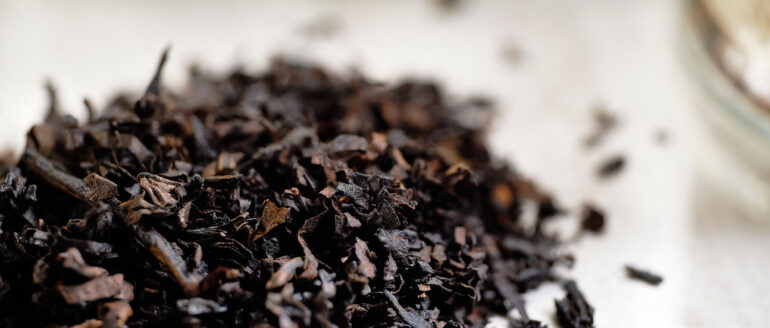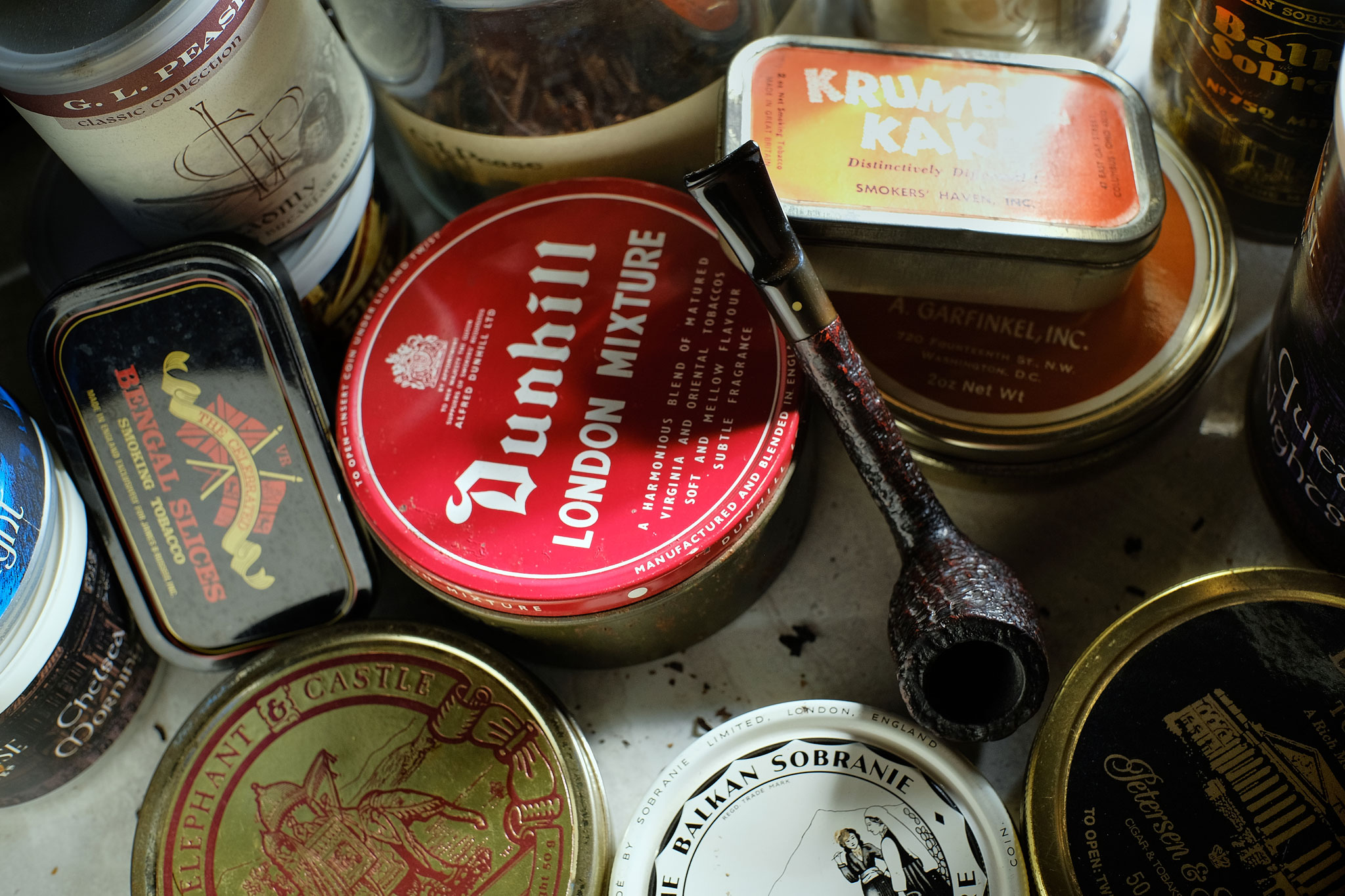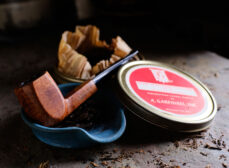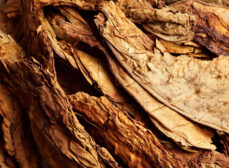
“Harry, I have no idea where this will lead us, but I have the definite feeling it will be a place both wonderful and strange.” –Special Agent Dale Cooper
In my pre-coffee state of mind this lovely, blessedly cool morning, I wanted something a little different. I’ve been on a mostly steady diet of Virginia blends for a while, and wanted a change of pace. I grabbed a favorite pipe from the rack, well suited to the tobacco I’d chosen, a wonderful, well-aged, full Latakia mixture, packed the bowl, struck a flame, and experienced what can tactfully be described as an unexpectedly dreadful smoke, as though the fires of hell had engulfed the tobacco. Seriously. What happened?
It’s safe to say that Latakia is one of, if not the most polarizing of tobacco types. Some love it, others loathe it; few seem to be indifferent. Those who enjoy its exotic nature might report that it reminds them of campfires, saddle leather, incense, peated whiskies or even stewed fruit. It can sometimes evoke black cardamom, anise, or amplify the delicate floral notes of oriental leaf when used in small quantities. Its detractors, on the other hand, might be inclined to use rather less complimentary descriptions like tire fires, creosote, brimstone, or burning camel poop, and can’t abide it in even the tiniest percentages. (Addressing that last thing, I’ve said many times that the only smoldering dung is that used to fuel the myths about Latakia. It’s actually a variety of herbs and woods that are used in the fumigation process, though I suppose the camel dung thing might be considered awkwardly poetic by some.)
Personally, I’ve had a long and happy relationship with Latakia, and that continues to this day, especially in the cooler months. When the mercury rises, I do gravitate towards either lighter mixtures, or other types of blends entirely, but after all these years, my deep appreciation of this delightfully exotic leaf remains steadfast, and it isn’t likely to die anytime soon. I will reluctantly admit that if my first experience with Latakia mixtures had been similar to this morning’s, however, I might have been inclined to throw the whole kit in the fire and give up pipe smoking entirely, and that could be exactly why some people are so vehemently opposed to the stuff. Fortunately, my long history with both this blend and briar precludes one anomalous experience from catalyzing such rash behavior.
Latakia is really one of the most fascinating of tobacco types, wonderfully aromatic and profoundly multi-faceted. As a subtle spice, it can add unique depth and dimension to a blend. In higher percentages, its assertive flavors and aromas make a bolder statement. And, yes, it can certainly have a tendency to steal the spotlight if used in large amounts, and very heavily laden blends can possess a sort of “sameness” that robs them of interestingness, but there’s a broad spectrum of mixtures between the extremes that I’ve always enjoyed exploring.
But, what happened this morning? It wasn’t the pipe, and it certainly wasn’t the tobacco; both are reliably stellar performers, and generally get along famously with one another. The answer lies in two or three things that, in my decaffeinated state, I had neglected: The tobacco was too moist, I’d neglected to clean the pipe when I last put it up, and I was a bit too eager in my lighting.
To age well, any tinned tobacco blend needs to have some moisture, but to deliver its best smoke, a Latakia mixture should be fairly dry. While Virginia blends rely on a bit of moisture to carry their sweetness through the smoke stream, that same moisture content can result in a harsh smoke with most mixtures. Also, it’s been my experience that Virginias are, in general, a bit more forgiving of a pipe that’s less than spotlessly clean. (There are some who believe, in fact, that Virginia blends actually improve if the shank is allowed to get a little tarred up. I won’t go that far, but caveat fumator.) Finally, while all tobaccos respond best to gentle lighting, this is especially true of Latakia mixtures.
I know the smoky stuff isn’t for everyone, and that’s okay. If you don’t like the stuff, or don’t think you do, but can maintain an open mind, I’d like to suggest trying a couple of things before casting all these wonderful blends into a personal oblivion. There are many “styles” of Latakia mixtures to explore. Some are structured on a foundation of Virginia leaf, others will present a richer orchestration with dominant oriental components, and some may have additional condiment tobaccos added, like perique or dark-fired Kentucky. Each has its own personality, and different styles suit different moods and different tastes. And, “fullness” has less to do with Latakia content than many believe. When blended with orientals, Latakia will tend to make a more powerful statement than when the same amount is blended solely with Virginias. Additionally, while these mixtures tend to be “strong” in flavor, they tend to be “mild” with respect to nicotine.
So, if you haven’t tried a Latakia mixture and are curious about them, or if you have and had a less than wonderful experience with them, some tips that I found myself re-learning today might be of value, and a little exploration might lead you to a new favorite, or at least expand your repertoire a little.
The mechanics are pretty simple. First, choose an appropriate pipe. I prefer smaller bowls in general, especially for more robust mixtures, and that’s where I’d start. If the pipe hasn’t been thoroughly cleaned, a few pipe cleaners lightly moistened with the alcohol of your choice, followed by a couple dry ones will get the shank ready for the new experience. (When I don’t have lab-grade ethanol on hand, I like the highest proof vodka I can find for this.)
Then, let the tobacco dry out a bit more than you think is right. I’m not talking about dry as mummy dust, but it should be a bit fragile when handling it, not springy. Fill the bowl gradually to the top, and press the leaf gently, just enough to settle it. I like to tap the side of the bowl as I’m filling to close up in any air gaps. We’re not after a dense pack, but one slightly more solid than gravity fed.
Finally, light the pipe gently. Holding the flame above the bowl, draw gently to coax the leaf to begin smoldering. Once the entire surface has charred, settle the surface using only the weight of the tamper and, this is important, set the pipe down for a minute or two. I’ve never understood what’s going on here, why this little ritual works, but it’s been consistently true for me forever, so I’m comfortable passing it along. This short rest, not the same as the so-called Delayed Gratification Technique (DGT), weaves some sort of magic that makes the rest of the smoke gentler, sweeter, and more flavorful. Just try it.
Finally, gently relight, and smoke slowly, sipping and savoring the experience. It might take a few sessions to acclimate to, and fully appreciate the complexity of the tobaccos, and even then, you might still find that Latakia is just not your jam, but at least you can take comfort in knowing you’ve given Abourihm, the “King of Flavor” its best shot.
-glp

(Photos by G.L. Pease)



















